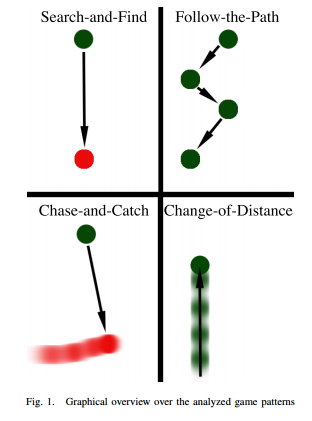History of Computers - Location-Based Games
Created by Morgan Sholeen
Introduction
Location-based games utilizes a player’s location in order to create objectives, obstacles, and interactions for the player based on their location. Most games use the Global Positioning System (GPS) to locate their players. Not all location-based games use the position of their players though. Geocaching, for example, uses the position of caches, water proof containers holding items provided by the players, to create a game akin to a treasure hunt for players.
Overview
Geocaching is one of the oldest and most popular location-based games. Geocaching was first started by Dave Ulmer, who placed the first cache in the woods near Beavercreek, Oregon. He then posted the coordinates of the stash online for other people to find, with the one rule being “Take some stuff, leave some stuff."[1] This new trend started when the government turned off Selective Availability.[2] Selective Availability made GPS for the public less precise in order to prevent other countries from locating citizens’ locations. With more a more accurate GPS location-based games became more feasible. The invention of the smartphone made location-based games easier to play, with games like Ingress and Pokemon Go taking off.
Location-based games typically fall into the category of search and find, follow the path, chase and catch, and change of distance.[4] In search and find games the player is suppose to travel to a fixed location (ex. Geocaching) and in follow the path there may be a fixed location but the focus is on the player’s journey to the location (ex. Tourality). Chase and catch games requires the players to chase an object in the real work (ex. Shadow City) but in change of distance games the direction and the end location do not matter only the distance one covers (ex. The Journey). Location-based games are not limited to one category. Pokemon Go,for example, is a location based game that uses search and find and change of distance.
Pokemon Go is another example of the popularization of location-based games. Released in 2016, Pokemon Go was based off of the popular video games. The game combined search and find with change of distance, with finding pokestops being search and find and hatching eggs being change of distance.[6]
Significance
Location-based games are significant to the gaming industry in that they provide an alternative to the traditional sit down games. They combine fitness with immersion in a way the Xbox Kinect and Wii can’t. Location-based games can be utilized in the future to make children and adults get more exercise.
References
- ↑ https://www.geocaching.com/about/history.aspx
- ↑ http://www.gps.gov/systems/gps/modernization/sa/
- ↑ http://68.media.tumblr.com/a045c1b8bf8c74a15399cbc8e859efdb/tumblr_owt9sxMb051t0syz9o1_400.png/
- ↑ https://www.snet.tu-berlin.de/fileadmin/fg220/courses/WS1112/snet-project/location-based-mobile-games_lehmann.pdf
- ↑ https://pbs.twimg.com/profile_images/886813914578657281/jqFEvmqU_400x400.jpg/
- ↑ http://www.pokemongo.com/

